
Into Germany: At the border between Poland and Germany passports were checked unlike some of the other borders.
Trader Joe's California Plums in the tiny market in Joachimstadt!
 We enjoyed spring in the very pretty Tiergarten and found the "Stelenfeld" Holocaust memorial with its plaque of a long list of prohibited behaviors.
We enjoyed spring in the very pretty Tiergarten and found the "Stelenfeld" Holocaust memorial with its plaque of a long list of prohibited behaviors.
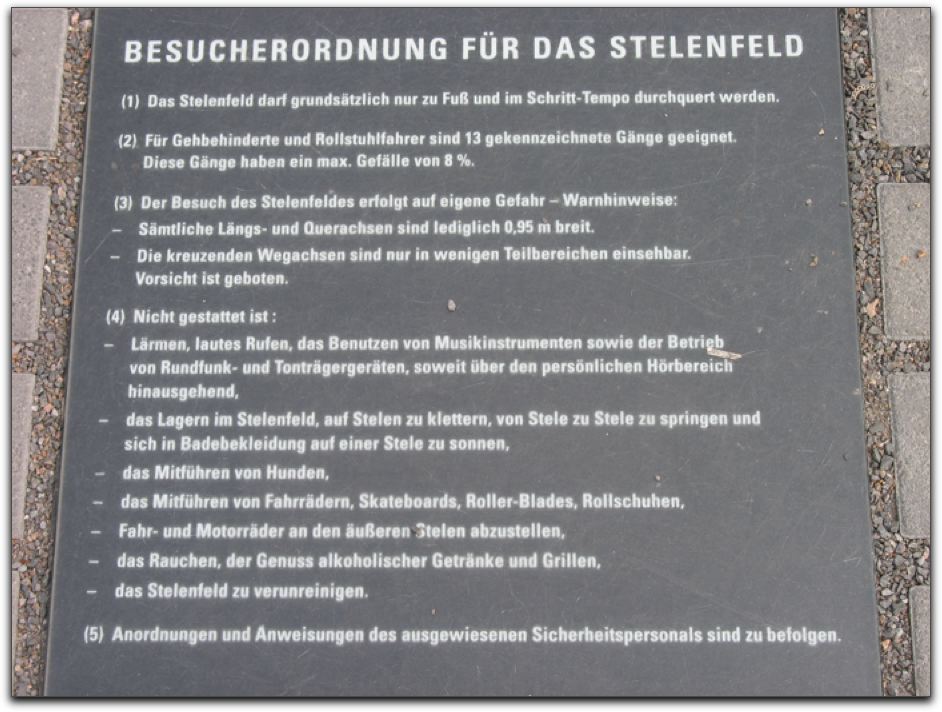
The memorial is huge, taking up an entire city block in downtown Berlin... a block away from the Brandenberg Gate. It is rather stark and imposing. I [Mark] don't know how much "explanation" is needed other than to know that it is for the murdered Jews of Europe. While each of the steles is strictly rectilinear, the irregularity of their height and the "floor" causes an individuality and disorientation that I [Mark] found moving. It was easy to lose your balance and your partner inside.
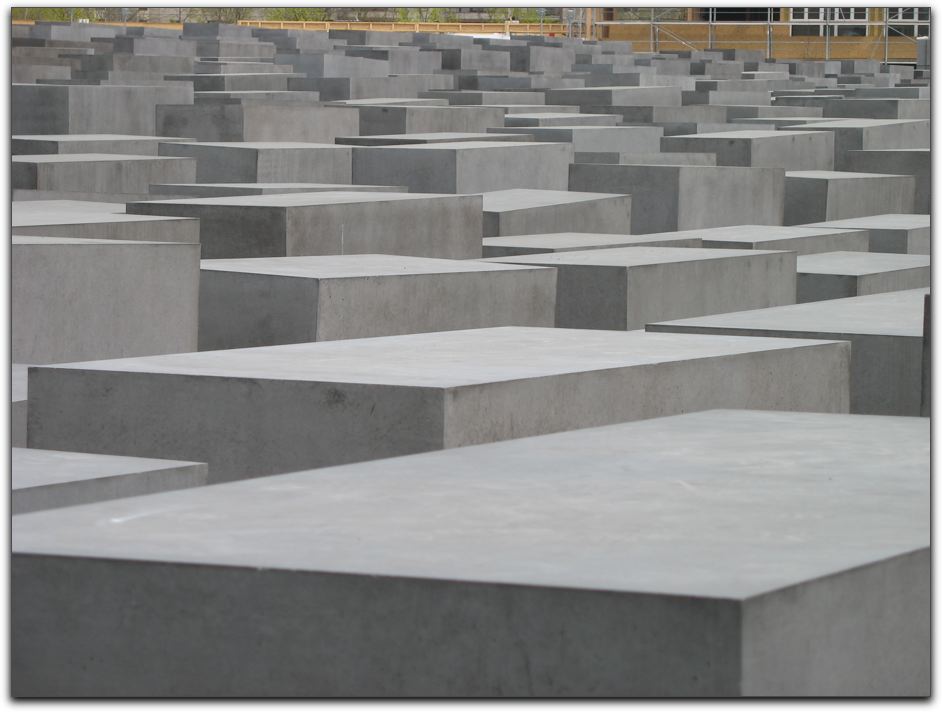

More walking to a German version of Starbucks called Meyerbeer (yes, named after Giacomo). A plaque on the wall explains who Meyerbeer was, but they had no information in English. Why is this coffee shop named after a German Jewish composer?

Neue Synagoge aka Orianenberger Strasse Synagoge, once again a synagogue now mostly a museum. The exhibit describes the reconstruction of the impressive dome, mentions mentions Joachim Prinz (minimal) and Regina Jonas (some), the first woman ordained rabbi and sadly killed at Auschwitz, whose duties at the synagogue and in the community never included preaching or conducting the service.
Later at the Neue Synagoge for services,with a liberal group that meets in a very simple chapel on the third floor. The shlichat tzibbur had a lovely voice. As we had seen in Vienna, the rabbi or leader blessed the children under a Tallit. In Berlin, each of the children received one of those Kinder eggs with toys inside. There we ran into Rabbi Dan Bridge, a Reform colleague from Hillel at University of Washington in Seattle. He's in Berlin for a month, renting a flat, part of his nine month Sabbatical. We had a great time at his place over Shabbat dinner.
Services in the morning were at The Pestalozzistrasse Synagogue, which we especially wanted to attend when we heard that the mixed choir of non Jews and the Cantor from Israel sing only the music of Louis Lewandowski. The older rabbi seemed sweet, welcomed guests from San Diego (us), and spoke about holiness, railing against the "shmutz" out there". The sit down Kiddush honored an 80th birthday. We happened to sit with a couple of young men who spoke reasonably good English. Between solo performances which seemed like birthday "offerings" of the choir members, Cantor and presentations on occasion of several birthdays, we learned that they (these two young men) feel anti-Semitism, that they chose this synagogue because one of them likes the rabbi, and the other guy because it's close. They come every week.
Re: The Berlin Jewish Museum Mark was pleased to find more graphics by Jakob Steinhardt, Lillien, Budko (et. al. including the work of a woman whose name I was not familiar with); on the other hand, he was surprised that < Kurt Weill was not mentioned.
The pieces falling out of the walls onto the ground, suggest the literal destruction as well as things out of control: The bottom floor of Holocaust exile theme, with all of its very personal stories, suggesting the millions of other stories many of them lost ; the disorientation of the dislocations and deportations, the uneven floors and the uncertainty about which way to turn all contributed to a powerful message. The rest of the exhibit about Jewish life in Germany, included some material about the celebration of Christmas/Chanukah Weihnukkah info, and again an area about Regina Jonas the first woman rabbi and more. It is quite a lot of information, presented in an absorbing style. The place was very crowded.
On Sunday April 23, we set off for a nice long walk (4 miles?) in the area, in the forest and the Hevel river in the suburb of Gatow, across from the the Grunewald Forest, just north of Wannsee (see portrait of that day). On our walk we came upon the aptly named "Wasted Effort Casino" (cf. Kohelet 1:2 [Ecclesiastes in Hebrew]).
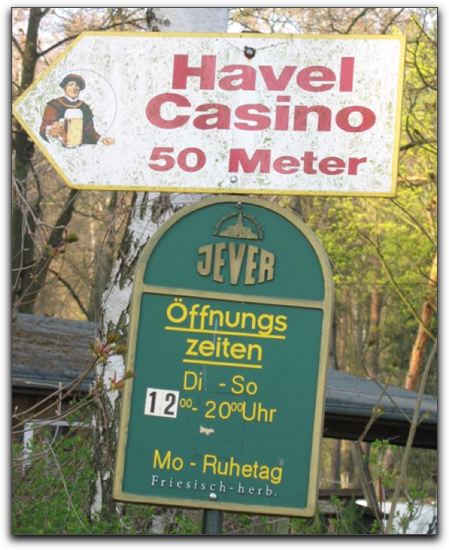
While in Charlottenburg we did get a decent look at the 1936 Olympic stadium.
On Monday April 24, our last day in Berlin, we waited the 1 1/2 hours to get into the Reichstag, where we enjoyed the view and the design of the dome. We visited the Gehry designed DG Bank building with a Gehry sculpture conference room inside.
We continued on to the Bebelplatz. We saw a couple of instances where Germany is doing what it can to "reinvent" itself as "The Land of Ideas". Near the Brandenberg Gate there was a huge sculpture of a car that looked like an old Claes Oldenburg with a sign beside it with the above-quoted title. Another was here at the Bebelplatz (the nerve!).

Here, you can faintly see that Germany is now proudly the land of modern book printing.
This spot commemorates the Nazi book burning in 1933. The sculpture there "Bibliothek" ("Library") by Israeli Micha Ulman (a subterranean library with empty shelves... enough for the number of books that were burned)
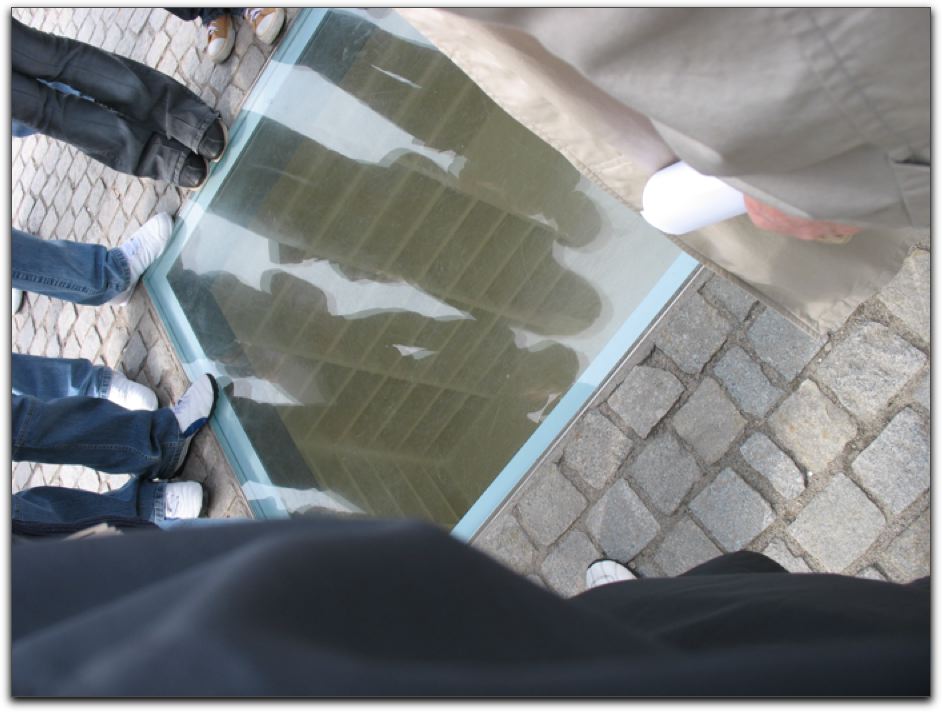
remind visitors that Heinrich Heine, already 100 years earlier, had warned that those who burn books will one day burn people.
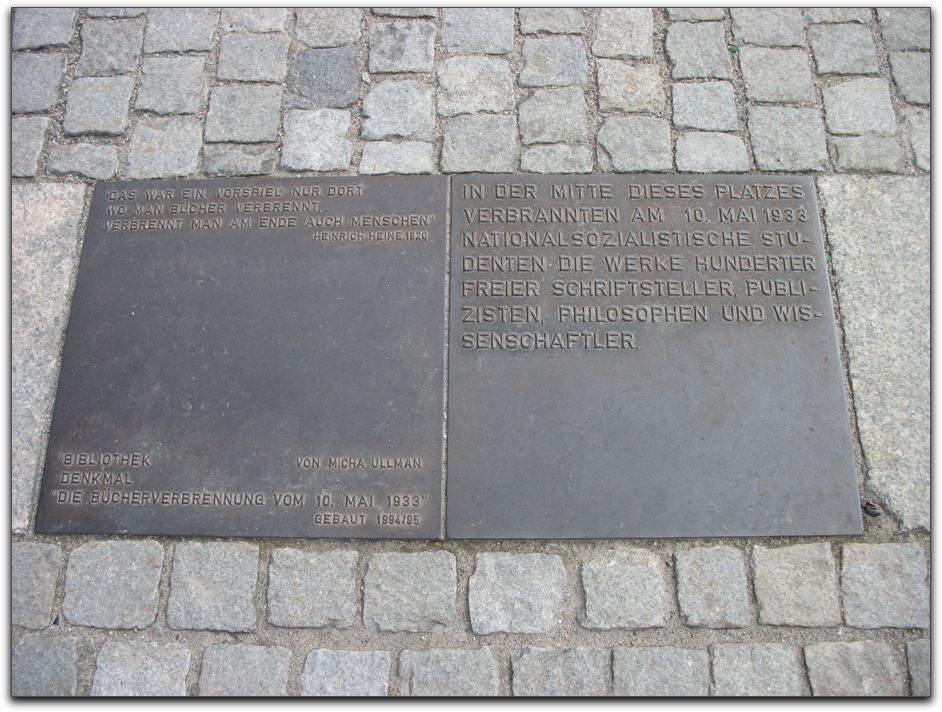
It is reassuring to see that there are now book sellers on the street right there
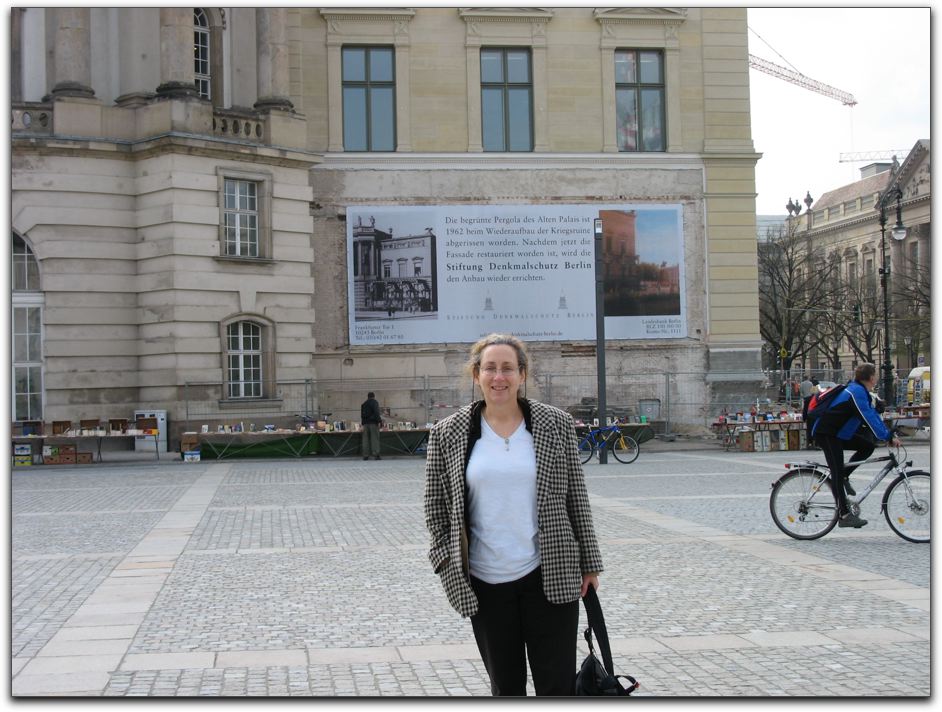
(and a short story written about the Bebelplatz on the Web).
Overall, while there is much to see and do in Berlin, I [Debbie] found it hard to be there--not just the dreary weather for several days but the overwhelming number of complex historical realities. I'm not sure that I would go back... well, yes, for a free trip (...for the children of Jews born in Berlin, perhaps).